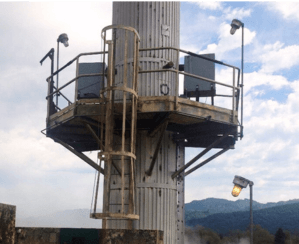Umbilical System
Inspection Service
How old are your umbilical systems? What condition are they in? Do they need to be repaired or replaced? The answers to these questions are important to the overall health of your CEMS operations. The condition of all of the umbilical system’s elements – from the wiring and tubing bundle to the insulation and heated hose – must be considered when evaluating age. ESC Spectrum’s Umbilical System Inspection Service provides you with answers to these questions and identifies what action is needed.
While manufacturers estimate 15-20 years for the heating cables, that range is highly dependent on many factors. Cold weather, water damage, dirt, and corrosive environments can cause them to degrade more quickly, and if not replaced in time, fail. Learn more about umbilical systems in the CEMS 101 series.
Many CEMS users schedule their umbilical replacement every 12-15 years and keep a spare in dry storage. ESC Spectrum’s Umbilical Inspection service helps you keep your facility healthy to avoid downtime and failures.
3 Step Umbilical System Inspection Process
- Step 1: On-site inspection of the health of your current umbilical system
- Step 2: Assessment with a detailed description of our recommendations, including replacement umbilical components
- Step 3: Source necessary umbilical components needed to perform repairs
From The Source Blog

Where to Install CEMS Probes, Flow Sensors & Opacity Monitors (According to EPA Guidelines)
In this article, read about where you can locate your plant’s CEMS Probes, Flow Probes & Opacity Units on your stack unit & what EPA regulations apply to them.

CEMS Filter Maintenance Tips for Reliable Performance
Regular CEMS filter maintenance is one of the easiest, and most effective, ways to ensure accurate emissions data and keep your system running smoothly. This article covers why filter care matters, and best practices to keep your system running smoothly year-round.

CEMS Fails From the Field: What Went Wrong & How to Fix It
Discover the top causes of CEM system failures and how to prevent them. Get expert troubleshooting advice and maintenance strategies to reduce downtime.
